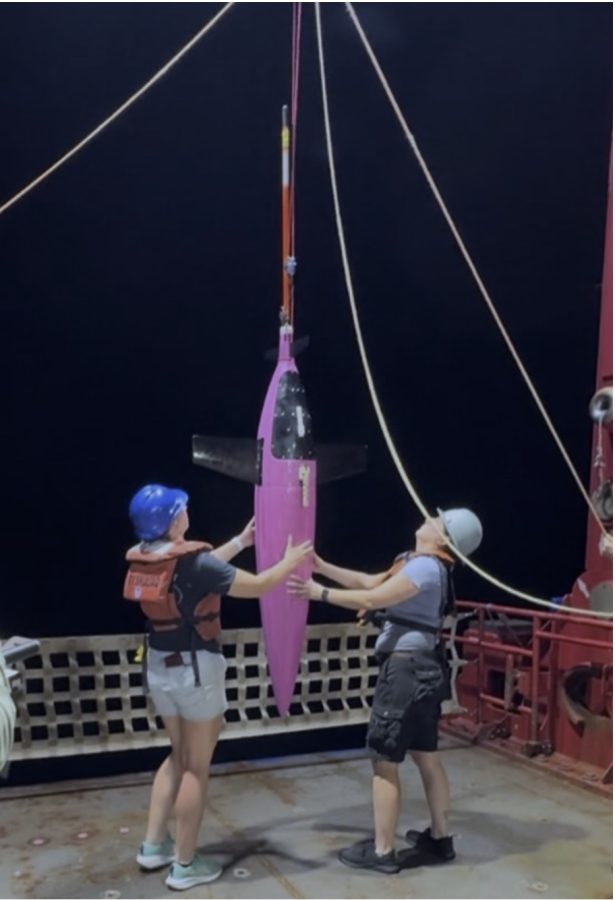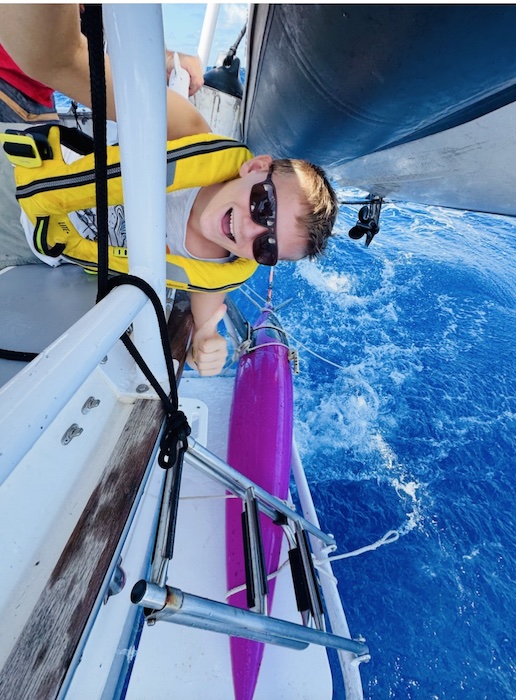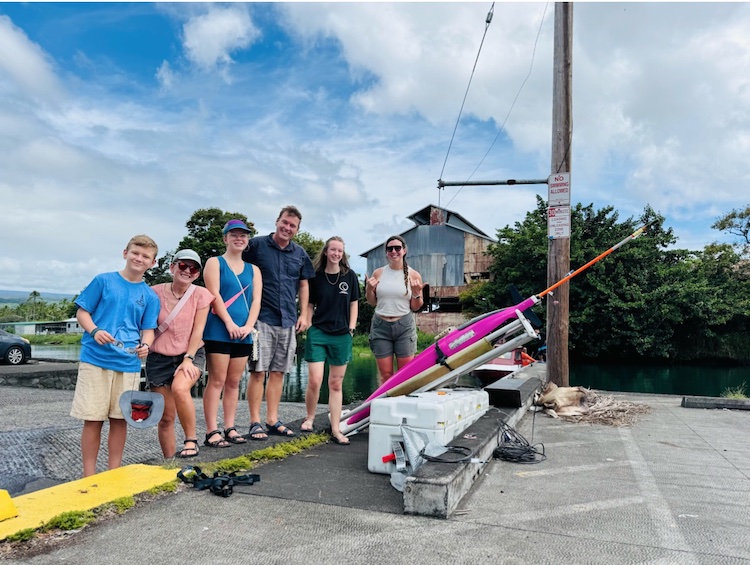
‘Pigeon’ Goes Home — A Seaglider’s Successful Recovery
Last month we wrote about the call to help recover a seaglider in the Pacific before it ran out of power. Yesterday we received the news that the seaglider has now been recovered and returned to its home, the Student Seaglider Center (SSC) at the University of Washington. The seaglider, affectionately named Pigeon, was built in the early 2000s and was deployed last year in the equatorial Pacific on November 21, at around 3 a.m. Just like a homing pigeon, the glider was meant to return home on her own. Instead, Pigeon wove a tale of adventure.
This was not a typical glider mission. Few have attempted such a long, remote traverse. But Pigeon and her onshore support team were up for the challenge. She was going to Hawai’i.

Three to four months into the mission, the pilots noticed something was off. Pigeon was still transmitting data and GPS signals, but wasn’t flying efficiently. Progress had slowed dramatically. With no onboard cameras and no ships nearby, the cause was a mystery. What was clear: At this rate, she wouldn’t reach Hawaii before her batteries ran out.
The SSC launched a wide-reaching campaign to find vessels that might be able to assist with her recovery. By May 26, Pigeon’s dive battery had finally died. She could no longer submerge and was drifting at the surface. Fortunately, she was still pinging her location, and ironically, the currents began pushing her toward Hawai’i faster than she had ever traveled while diving. Hope flickered.
On May 30, the Canadian Ventilly family was sailing from Tahiti to Hawai’i aboard their 36-ft sailboat, SV Oatmeal Savage, when they came across the call for help and offered to attempt a rescue.
As they approached Pigeon’s last known location, the family received a distress call from friends aboard SV Flow, about 200 miles behind. Flow had lost its rudder and needed to abandon ship. The Ventillys turned back and rescued them — adding two adults and their belongings to their already-small sailboat. With six people aboard, they continued toward Pigeon.
On June 5, in the deep blue Pacific around 10°N, 145°W, the Ventillys spotted our beloved hot-pink Pigeon. They hauled her aboard and secured her to the swim platform.

The issue was immediately apparent — half of her rudder was missing. Without it, she had been struggling to steer and maintain buoyancy for months. How it broke off remains a mystery — one of the ocean’s many secrets.
On June 11, Oatmeal Savage pulled into Hilo, Hawai’i, where Chief Scientist Kohlman and SSC member Paige McKay were waiting dockside. After six months and over a thousand miles, Pigeon was on land. During her travels from the equator to 10°N, she had collected continuous profiles down to 1000 meters, capturing tropical instability waves, a transect of the equatorial current system, the biologically rich cold tongue, the Intertropical Convergence Zone, and much more.
Now back in Seattle, Pigeon will be cleaned, repaired, and prepped for her next mission. Meanwhile, SSC members are beginning to analyze the treasure trove of data she collected during her record-setting voyage.

What started as a student-led experiment turned into a testament of grit, teamwork, ocean science, and a little bit of maritime luck. Pigeon flew. And she came home.
If sailors/boaters are interested in helping researchers in the future, Yachts for Science is a great organization that posts calls for assistance on their social media.
